 |
||
|
||
| ||
VIA Technologies is one of the leaders in chipset and processor production and I must admit that the onset of the Taiwanese company is getting so strong that Intel must do its best to retain its position. The press conference VIA hold in Hannover at CeBIT 2002 had a great audience.
The main subject was an announcement of the new chipset - VIA Apollo P4X333 meant for Intel Pentium 4 based systems. But before they spoke about the company's plans and how the company saw the modern market. According to the VIA the Era of Total Connectivity has already started, and new protocols and ways of data transfer such as Gigabit Ethernet, cable junction, 802.11, satellite data transfer etc. are the integral part of it. New interfaces such as USB 2.0, IEEE 1394, Bluetooth are going to provide high-speed reception and transfer of data streams of the necessary broad band. Easy connection and configuring are paid much attention to. VIA places high emphasis to other computer spheres as well. For example, they expects that the demand in personal video recorders and in means of reception and reproduction of MP3 files will be growing. Another promising sphere for VIA is a "computer for everybody". It's not secret that the quantity of home equipment controlled by computers is growing. And quite often such devices do not require expensive desktop machines running on the latest GeForces. On the contrary, many users are looking for ways to make their PCs smaller and reduce expenses for purchasing and modernization of computers. VIA seems to be very helpful in it. Well, you are welcome to the Era of Total Connectivity, internetization, Set-top-Box devices, miniature home computers, Web consoles and electronic tablets for reading of books.
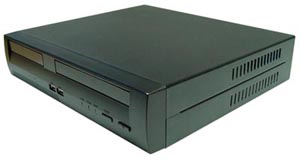
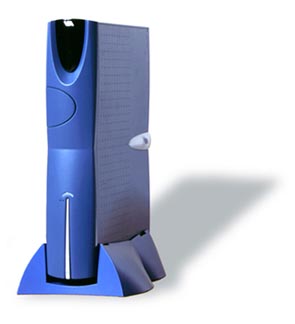 Of course, an electronic house sounds enchanting and attractive. Just imagine you are sitting in your favorite arm-chair with a wireless keyboard and looking through the pages of our site on a wide-screen plasma panel. And somewhere deep in a table a little computer is working tirelessly and noiselessly; it doesn't have any coolers or other helicopter-like products and is based on the All-in-One principle. But this conception is mostly attractive for users who are full up with Quake 3 and other games and who want their fridge order their favorite juice via the Internet, their vacuum cleaner travel around the rooms according to the specified itinerary and light go on and off by voice. But there are also many users who need the maximum performance at any price. Editing of high-quality video on a home computer becomes more and more popular, data volumes are growing, long waiting for implementation of complicated filters in the Photoshop irritates, and Windows XP crammed with various multimedia effects opens slowly a folder on a disc. Right for such users VIA has released its new high-performance VIA Apollo P4X333 chipset.
 Chipset specification
Comparison of characteristics
The company considers that the DDR333-like memory has the best prospects. According to VIA, by 2002 40-50% of all mainboards will support DDR333. VIA has got support from such memory makers as Samsung, Hynix and Micron. The IDE controller integrated into the VT8235 South Bridge supports ATA133 standard and ATA33/66/100 devices - old hard drives, CD-ROM, DVD-ROM devices etc. And the ATA133 has a 33% potential performance gain (which is not used by the today's devices) as compared with the ATA100. Basic characteristics of the P4X333 North Bridge
Basic characteristics of the VT8235 South Bridge
At the press conference the VIA's representatives showed results of the Sisoft Sandra 2001, StreamD 2000 Times and Quake III tests. Undoubtedly, the new chipset is very efficient and supports a great many of new standards and technologies. But look attentively at the Quake 3 results.
The gain over the P4X266 is 5%. But however that may be, the P4X333 is the most perfect and attractive chipset from a customer's point of view. Remember also that apart from chipsets and processors VIA Technologies develops interface controllers, network equipment, multimedia products and controllers for CD-ROM and DVD-ROM drives. They also demonstrated VT6202 chip and a VIA's board of 4-port USB 2.0 controller on it and VT6306 chip on which it's possible to build a 3-port IEEE 1394 controller.
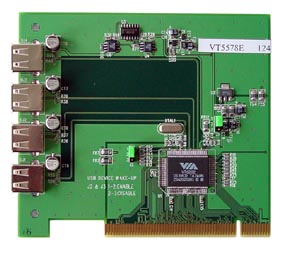 VIA USB 2.0 controller
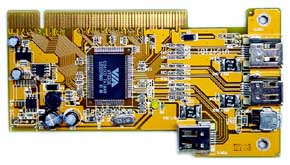 VIA IEEE 1394 controller The release of the VT7216 controller which is meant for DVD-ROM devices and provides for 60x speed of reading of CD-ROM discs and 16x for DVD-ROM is not a less important event than the release of IEEE 1394 and USB 2.0 controllers. By the beginning of the summer VIA is going to launch a chip codenamed VT7216A which will allow DVD-ROM drives based on this chip to read DVD-RAM media. And in Q4 2002 we expect for the VT7348 - a controller for CD-RW drives.
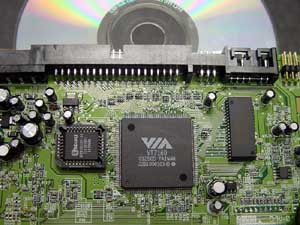 The VT1622 is a new digital TV-encoder from VIA which supports progressive video-out for digital TV-sets of the new generation. Besides, it supports Digital RGB and YCrCb video-in standards. Composite A/V, S-Video, YCbCr and SCART can be used to output video to standard TV sets. The controller also supports NTSC and PAL and Digital TV SDTV standards. The VT1622 chip can be integrated into a mainboard, video card or an extension card for an ACR connector. The controller allows for high-quality digital image of 1024x768 obtained at the expense of additional filters which improve images and make them sharper. The Macrovision technology designed to protect digital television from illegal copying is also supported.
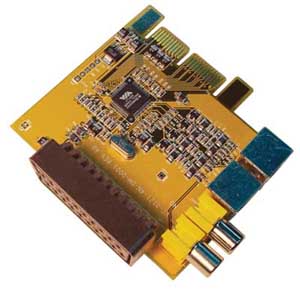 At the press conference the processor sphere was also touched upon. Despite quite low sales volumes of the VIA C3 processor the Taiwanese monster plans on getting over 1.1 GHz in the Q2 2002, and in the second half the company is going to reach 1.5 GHz on the new CPU's core.
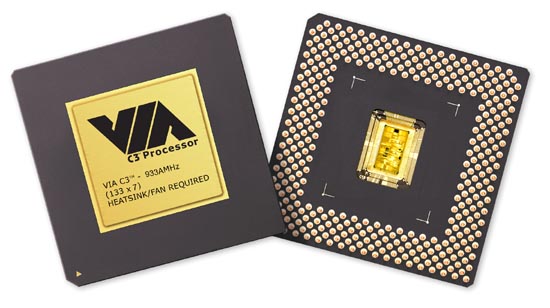 Till the end of the second quarter the mobile version of the VIA C3 will be available in variations from 800 to 933 MHz. By the Q3 VIA will launch a mobile 1.1 GHz version. The Mobile VIA C3 is based on the 0.13 micron process, comes with 128 KBytes L1 cache and 64 KBytes L2 cache. The 100 and 133 MHz system bus, and MMX and 3DNow technologies are supported!

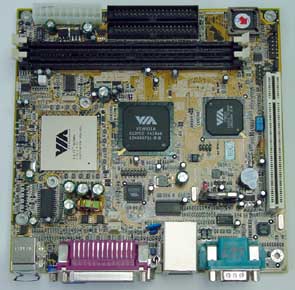
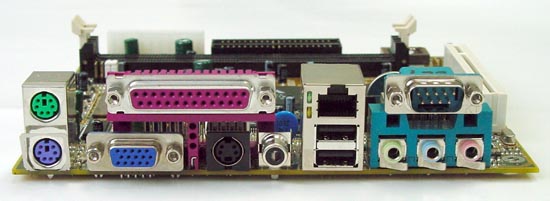 Besides, the future variants of the Mobile VIA C3 are going to incorporate the energy saving technology. But already now the VIA's processors work faster than the Intel Celeron in business applications (which occupy the same price niche) and consume much less power.
VIA pins great hopes on the Eden platform. As the platform is well thought out, compact, universal and cheap in production it's possible to assemble on it both inexpensive but high-performance and functional PCs and digital VCRs, Set-top-Box devices, Web consoles, Web tablets and other solutions up to server ones.
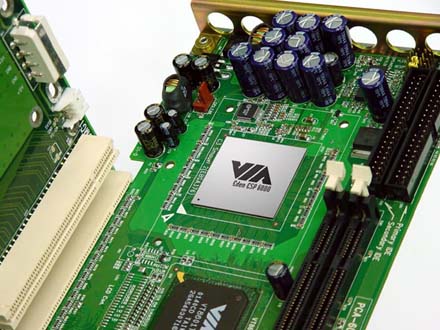
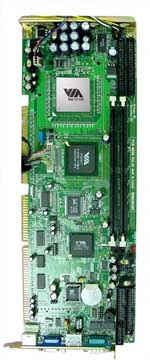 Eden ESP 6000
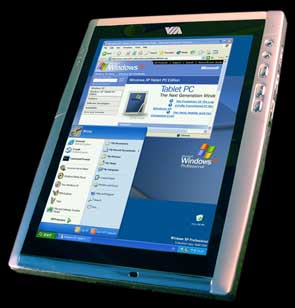 VIA TablePC
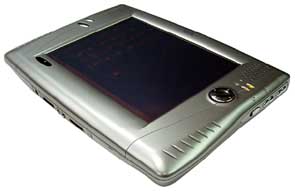 VIA Web-pad
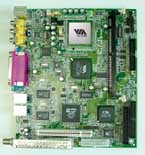 VIA Eden ESP 3000
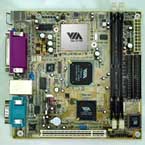 VIA Eden ESP 4000
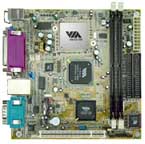 VIA Eden ESP 5000 For sure, VIA is not going to drop speed. The press conference where they unveiled a lot of new stuff showed that they are speeding up. Some journalists, for the impressions were so strong, dozed off ;-)
Write a comment below. No registration needed!
|
Platform · Video · Multimedia · Mobile · Other || About us & Privacy policy · Twitter · Facebook Copyright © Byrds Research & Publishing, Ltd., 1997–2011. All rights reserved. |